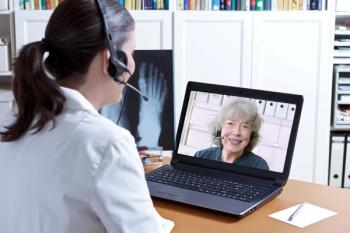
Digital Health
Latest News

Latest Videos
CME Content
More News

To ensure patients will use digital health solutions, they need to be at the table when these tools are being designed, said Amila Patel, PharmD, chief clinical officer, Navigating Cancer.

Researchers developed a framework to pull high-resolution digital phenotypes from wearable devices and use them to predict the risk of cardiometabolic disease.

Telemedicine visits can make physicians more efficient, but the ability to report symptoms can add to the workload burden as staff try to figure out which symptoms need to be addressed, said Susan Escudier, MD, FACP, vice president of value-based care and quality programs, Texas Oncology.

The mobile intervention, based on the Integrated Theory of Health Behavior Change, significantly improved self-management behaviors among patients with tuberculosis (TB).

Navigating Cancer has found patients, including those who are elderly, are adopting applications to stay connected with their care teams, said Amila Patel, PharmD, chief clinical officer, Navigating Cancer.

The use of digital health solutions has been a tremendous benefit during the pandemic that should continue, said Susan Escudier, MD, FACP, vice president, value-based care and quality programs, Texas Oncology.

Participants in a digital acute musculoskeletal program experienced better pain and function outcomes compared with nonparticipants, demonstrating benefits for acute and subacute musculoskeletal conditions.

Elaine Goodman, MD, MBA, clinical lead for population health management at Mass General Brigham, talks about how the COVID-19 pandemic should impact developments in digital health management going forward.

To reduce bias based on the user’s current health status, a mobile health intervention used a future-self avatar to help individuals understand long-term effects of physical activity and nutrition on their body.

Our experts conclude by interpreting ways to better educate both payers and providers on PDTs.

Diana Brixner, RPh, PhD, comments on how incorporating value-based pilot programs would impact her decision-making with PDT coverage as a payer.

Drs Podesta and Brixner discuss possible ways to improve access to PDTs for every party involved—patient, payer, and provider.

Two medical experts relay their ideas on how to better improve the payer-provider relationship surrounding PDT use.

Panelists at the National Alliance of Healthcare Purchaser Coalitions 2022 Leadership Summit discussed the latest innovations in digital therapeutics and how they benefit patients on an individual and broad scale.

Digital health care has been a key initiative at Texas Oncology, because it ensure patients can receive better care at their home, explained Debra Patt, MD, PhD, MBA, executive vice president of Texas Oncology.

Two stakeholders involved in investment and development of behavioral care services discuss the potential of digital therapeutics as a cost-effective alternative to address unmet mental health needs during an AHIP 2022 session.

Patients with substance abuse disorder (SUD) saw a significant reduction in hospital encounters and per-patient costs after the initiation of a prescription digital therapeutic.

Dr Brixner highlights the important factors a payer must look at when determining PDT coverage, and Dr Podesta comments from the provider perspective.

Medical professionals discuss PDT management, from patient satisfaction and clinical outcomes to cost.

A review of more than 200 neurology-focused apps found opportunities to improve language offerings and hybrid use with clinicians.

Using data from a wearable fertility tracking device, researchers developed an algorithm that successfully identified 68% of COVID-19 cases before symptom onset.

Dr Arwen Podesta explains her PDT patient selection process and the factors she considers before treatment.

Dr Podesta calls on her experience using PDTs with patients to describe what successes and challenges are common.

After completing 6 modules in a digital therapeutic for insomnia, most users met criteria for meaningful treatment response and 40% met criteria for remission.

A digital health intervention delivered via smartphone showed that current anxiety symptoms predicted both current and later depressive symptoms.
















































